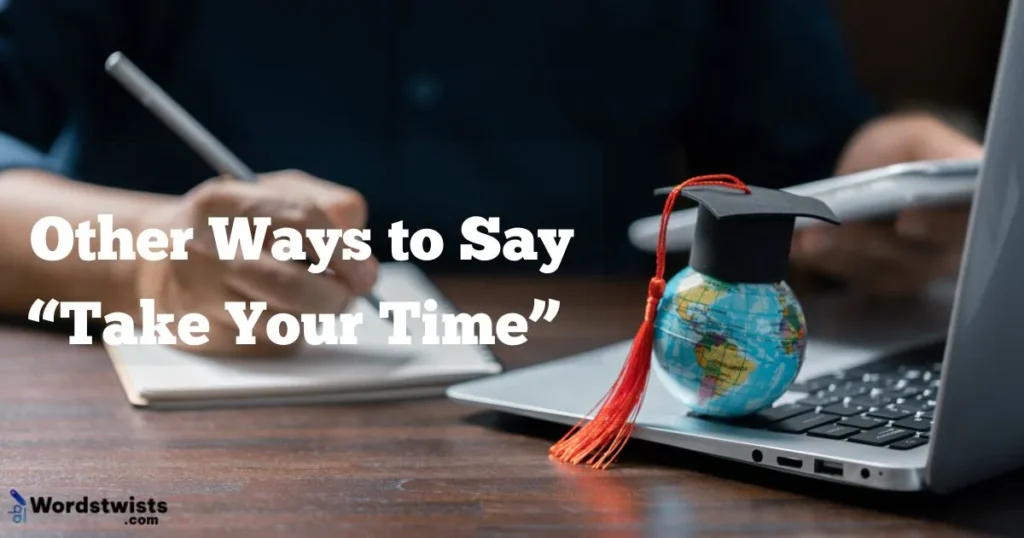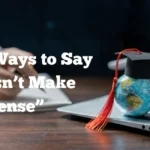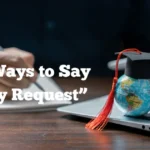We’ve all said “take your time” — and often, we mean it from the heart. Whether we’re being patient, kind, or giving someone space, it’s a helpful and polite phrase. But let’s be honest… After the third or fourth time in a single day, it can start to feel a little tired.
If you’re like me and you want your messages to feel fresh, supportive, and sincere, then it helps to have a few go-to alternatives. That’s why I’ve put together this personal list of 25 natural ways to say “take your time” — without sounding robotic or boring.
These expressions will help you sound more empathetic, professional, or even friendly, depending on the situation. So whether you’re writing a kind email, replying to a colleague, or talking to a friend who’s running late — these phrases have you covered.
Alternatives to “Take Your Time”
No rush
A casual and kind way to say someone doesn’t need to hurry.
Examples:
- No rush on the report — just send it when you’re done.
- Take your time, no rush at all.
- No rush! I’m just here when you’re ready.
- Seriously, no rush — I can wait.
- You can reply whenever. No rush.
Why it works:
It feels easy and laid-back. Perfect for everyday use, especially in friendly conversations or casual work chats.
Whenever you’re ready
Gives the other person full control of the timing.
Examples:
- We’ll begin whenever you’re ready.
- Take a deep breath. Start whenever you’re ready.
- There’s no pressure — just go whenever you’re ready.
- Ready when you are.
- You can take your time. Start whenever you’re ready.
Why it works:
It communicates respect and patience, which is important in supportive or emotional settings.
At your own pace
Helpful in learning, working, or recovery settings where someone may need time.
Examples:
- No pressure — do it at your own pace.
- Healing takes time. Go at your own pace.
- Everyone learns differently. Take it at your own pace.
- You’re not being timed.
- At your own pace, no judgment.
Why it works:
This phrase respects personal capacity and timing, great for gentle encouragement.
There’s no hurry
Similar to “no rush,” but feels slightly more formal or polite.
Examples:
- There’s no hurry — we’ve got time.
- Really, there’s no hurry.
- Finish it next week. There’s no hurry.
- Take a break first. There’s no hurry.
- You’ll get to it when you’re ready. No hurry at all.
Why it works:
It makes people feel safe and not rushed, especially useful in email or professional replies.
Feel free to go slow
Adds a kind, human touch, especially when someone is anxious or overwhelmed.
Examples:
- Feel free to go slow — no pressure.
- We’re not in a race. Go slow if you need to.
- Feel free to take your time.
- You can go slow; I’m here.
- Don’t worry about speed. Go at your pace.
Why it works:
It’s calming and encouraging, ideal when you want to help someone feel relaxed and unhurried.
Don’t stress about the time
Perfect when someone is clearly worried about being late or behind.
Examples:
- Don’t stress about the time — I totally understand.
- No problem at all. Don’t stress about the time.
- I know life gets busy. Don’t stress.
- Take a breath. You’ve got this.
- Don’t worry, the deadline’s flexible.
Why it works:
This one shows compassion. It reassures people and lets them breathe.
Go at your own speed
A kind, people-first way to say you’re not rushing them.
Examples:
- Go at your own speed — no pressure here.
- It’s not a race. Take it slow.
- Do what feels right.
- You’re in control.
- Go at your speed. I’m happy to adjust.
Why it works:
It offers a sense of empowerment and choice, which can reduce anxiety.
We’ve got time
This phrase tells the other person you’re both not in a rush.
Examples:
- Relax. We’ve got time.
- No rush — we’ve got all day.
- There’s no deadline today. We’ve got time.
- Sit back. We’ve got time to talk.
- You don’t need to hurry. We’ve got time.
Why it works:
It creates a sense of ease and comfort, great in both personal and team settings.
I’m not in a hurry
Personal and thoughtful, especially when someone feels like they’re slowing you down.
Examples:
- Take your time. I’m not in a hurry.
- No stress — I’m good.
- Don’t worry about me.
- I’m happy to wait.
- I’ve got nowhere to be.
Why it works:
It reassures the other person that you’re being patient and supportive, without putting pressure.
No pressure at all
Friendly and honest — perfect in both emotional and business situations.
Examples:
- No pressure at all — take your time.
- Answer when you’re ready.
- Don’t feel like you need to rush.
- It’s all good, no pressure.
- I’m here, no rush.
Why it works:
Pressure is the enemy of calm. This phrase directly removes it, which helps people feel relaxed and respected.
Check it Out: Other Ways to Say “Doesn’t Make Sense”
Whenever it works for you
This flexible phrase gives the other person the freedom to choose a convenient time — perfect for respecting their schedule.
Examples:
- We can reschedule whenever it works for you.
- Just send it over whenever it works for you.
- I’m flexible — let’s connect whenever it’s good for you.
- No rush. Take care of it whenever it works for you.
- We can chat later. Whenever it works for you is fine.
Why it works:
This phrase shows that you value the other person’s time and comfort, especially useful in professional or remote settings.
Go ahead — take the time you need
A direct, supportive way to remind someone that it’s okay to slow down.
Examples:
- Go ahead — take the time you need to think it through.
- No rush, take the time you need.
- Go ahead and rest. Take all the time you need.
- You’ve been through a lot — take the time you need.
- I’ll wait here. Take the time you need.
Why it works:
It feels caring and genuine, perfect when someone’s overwhelmed, grieving, or healing. It gives emotional space.
It’s all good
Simple, casual, and filled with positive energy. Great for informal settings.
Examples:
- Running late? It’s all good!
- Don’t worry about the delay. It’s all good.
- Need more time? It’s all good.
- Forgot to reply? It’s all good, no problem.
- You’re not bothering me — it’s all good.
Why it works:
This one instantly creates a sense of forgiveness and understanding, keeping the conversation light and kind.
Get to it when you can
Easygoing and realistic, this phrase shows that you trust them to handle it in their own time.
Examples:
- No rush — get to it when you can.
- Take care of it when you’re free.
- Just get to it when you can manage.
- I know things are busy. Get to it whenever.
- Totally fine, get to it when it works for you.
Why it works:
It’s polite, non-demanding, and ideal for asynchronous communication like emails or remote teamwork.
Handle it when you’re ready
Shows trust and patience, especially in sensitive or emotionally charged situations.
Examples:
- No pressure — handle it when you’re ready.
- I trust your judgment. Do it when you’re ready.
- You can respond later. Handle it when it feels right.
- Handle it when you’re mentally in the right place.
- You don’t owe me an instant reply. Handle it when you’re ready.
Why it works:
It’s compassionate and empowering, letting someone know you understand they might need time emotionally or mentally.
There’s plenty of time
A calm, comforting reminder — great for diffusing anxiety.
Examples:
- No stress — there’s plenty of time to review it.
- Don’t rush the decision. There’s plenty of time.
- Relax, there’s plenty of time before the deadline.
- We’ve got hours left — there’s plenty of time.
- Let’s not panic. There’s plenty of time.
Why it works:
This phrase creates a peaceful tone and makes people feel safe to proceed slowly.
No need to rush it
A soft way to encourage thoughtfulness and quality over speed.
Examples:
- No need to rush it — quality matters more.
- Take your time, there’s no need to rush it.
- We’ll get it done, no need to rush.
- No need to rush it, we’re ahead of schedule.
- Think it through — no need to rush it.
Why it works:
It communicates patience and thoughtfulness, especially when quality matters more than quick results.
Take all the time you need
One of the warmest, most supportive phrases — especially helpful in personal or emotional conversations.
Examples:
- No pressure — take all the time you need.
- It’s okay. Take all the time you need to heal.
- Take all the time you need before responding.
- I’m not going anywhere. Take your time.
- Take all the time you need. I understand.
Why it works:
It reassures the person that their well-being is more important than speed. It builds trust and emotional comfort.
It can wait
A confident and direct way to show you’re not in a rush.
Examples:
- Don’t worry — it can wait until tomorrow.
- Really, it can wait. Focus on yourself first.
- Take care of what matters. It can wait.
- I’ll be here when you’re ready. It can wait.
- Reply when you can. It can totally wait.
Why it works:
It signals that you value the person over the task, which makes relationships stronger and communication more empathetic.
I’m happy to wait
This phrase puts the focus on your willingness to be patient — a powerful gesture in any context.
Examples:
- No pressure. I’m happy to wait.
- Take your time — I’m good to wait.
- I know you’re busy. I’m happy to wait until next week.
- I can wait as long as you need.
- Please don’t rush — I’m happy to wait.
Why it works:
It’s thoughtful and kind, offering reassurance and calm without sounding robotic or passive-aggressive.
We’re not on the clock
Best for easing tension in situations where someone feels rushed or watched.
Examples:
- Relax — we’re not on the clock here.
- No stress. We’re not on the clock.
- Take a break. We’re not on a strict timeline.
- This isn’t urgent — we’re not on the clock.
- You can go at your pace. We’re not counting minutes.
Why it works:
This phrase lightens the mood and reminds people that time pressure isn’t real in the moment.
Take your time — no worries
This friendly, hybrid version adds a reassuring twist to the classic phrase.
Examples:
- Take your time — no worries at all.
- You’ve got this. No rush, no worries.
- Totally okay — take your time, no worries.
- No problem. Take your time.
- Hey, life happens. Take your time — no worries.
Why it works:
It’s warm, relaxed, and completely non-threatening — ideal for real human connections.
Finish when you can
A simple phrase that gives freedom and flexibility.
Examples:
- Finish when you can — no deadline from my side.
- It’s okay. Finish when you’re ready.
- Finish when you can, and let me know.
- No stress — finish when it fits into your day.
- Finish when you can, no rush.
Why it works:
It removes urgency without sounding vague. Great for both work and casual situations.
I trust your timing
A phrase that shows respect and belief in the other person’s pace.
Examples:
- No pressure — I trust your timing.
- Take your time. I trust your judgment.
- Handle it however you see fit. I trust your timing.
- You know what’s best. I trust your timeline.
- Don’t worry. I believe in your flow.
Why it works:
It adds a powerful layer of trust and confidence, strengthening both professional and personal relationships.
Take it slow if you need to
This caring phrase works well for people feeling anxious, tired, or emotionally worn out.
Examples:
- It’s okay to take it slow if you need to.
- You don’t have to rush. Go slow.
- Take it slow. No one’s rushing you.
- You’re allowed to move slowly.
- Go easy on yourself — take it slow.
Why it works:
This is gentle, affirming, and shows emotional intelligence, which is perfect for sensitive interactions.
Conclusion
I hope these alternatives to “take your time” help you communicate with more kindness, clarity, and confidence. Whether you’re offering support, easing pressure, or simply being patient, choosing the right words shows emotional intelligence and respect.
Personally, I love using phrases like “no rush” or “whenever you’re ready”—they instantly put people at ease. So go ahead, bookmark this list or try one out today. It’s a small shift, but it can make a big difference in how your message is received. I truly hope this helped—let me know your favorite one in the comments.

I’m Leo Knox, the wordplay wizard behind WordsTwists.com where I turn everyday meanings into funny, clever, and creative twists. If you’re tired of saying things the boring way, I’ve got a better (and funnier) one for you!


